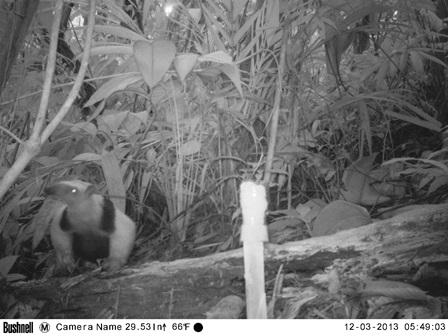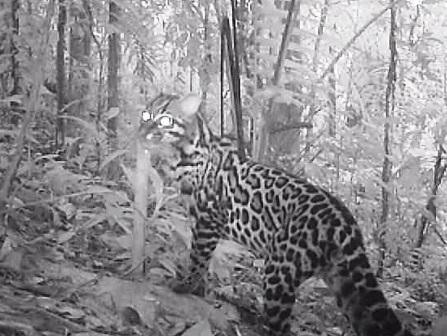María Runnebaum
With this study we will explore how medium and large sized mammals use human altered landscapes for a better understanding of tropical forest dynamics and ecological implications of successional processes.

Tamandua mexicana.
The international’s economic demand for Costa Rican Golden Pineapple has had an explosive increase in the last few years. In the year 2008 over 45.000 hectares were planted, while in 2000 there were just 9.900 ha. That is an increase of 450% and no other product has had that type of increase in Costa Rica. There is a significant amount of illegal deforestation for the expansion of the crops and nowadays there is no exact number of what is total national area occupied by pineapple plantations because there is no census or control by municipalities or any other organization. It is well known the negative pressure of monocultures over the whole ecosystem, however these investigations are mainly on the temperate zones and mammal monitoring in productive landscapes in the tropical Rainforest is required.

Our research interest is using tools, such as ecology and behavior, in the context of the landscape ecology towards a better understanding of mammal population dynamics and their conservation needs. Our main objective is to analyze medium and large sized mammal assemblages on different human-disturbed conditions to generate information about their activity in agro systems and disturbed areas.
Therefore, we will describe aspects of mammal community composition and its occurrence in the Tropical Rainforest lowland with remnants of forest and agricultural areas in Sarapiquí, Costa Rica, during 2013. Terrestrial mammal record will be conducted using camera-trapping method and we will select sites in three different levels of human disturbance:
(1) continuous forest
(2) pasture areas with forest remnants
(3) pineapple crops with forest remnants.
A total of 54 cameras will be active for a period of 7 months of 2013-2014. We’ll evaluate the conservation value for mammals of this remnants according to the species found. And also characterize the way mammal fauna has changed since 1950 in the area.
We will allow cooperation between biologists and conservationists with plantation owners for future projects and efforts for biodiversity conservation in productive landscapes, and finally we intend to provide a foundation for future comparisons and discussing implications on management and conservation strategies for mammals.